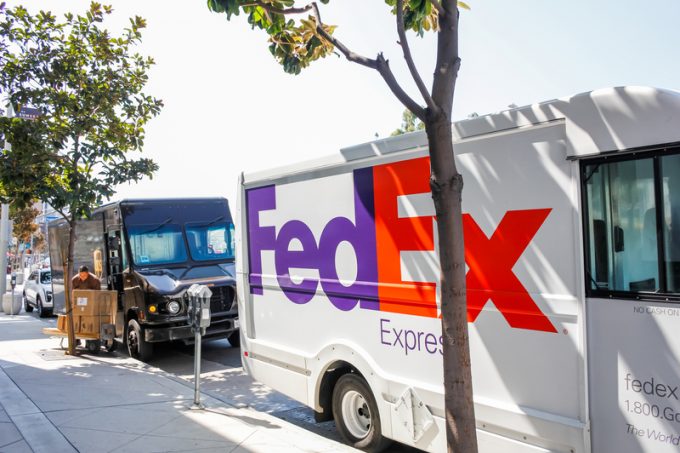East Midlands poised to become 'UK's most important' express air freight hub
East Midlands Airport (EMA) is poised to become “the UK’s most important express air freight ...

Parcel shippers may be wondering if they missed something – a report citing several parcel consultants last week highlighted sweeping discounts from FedEx and UPS that were “extraordinary in their depth and breadth”.
At last, parcel rates are following the steep decline of pricing seen in the truckload, ocean and air cargo markets. And in the soft market conditions, the two large integrators are engaged in a tug-of-war over parcel traffic.
UPS lost a large chunk of business this year as customers shifted their traffic to other carriers, out of concern over a potential crippling strike at the Atlanta-based behemoth. With the labour contract signed, the company mounted a determined drive to recapture lost business.
For its part, FedEx is determined to hang on to the gains it made this year from its rival’s predicament.
Consultants cited in the report told of discounts almost across the board, both to attract customers and to retain clients. FedEx and UPS even offered to pay each other’s contract termination charges to induce shippers to switch sides.
The report noted that not all industry consultants have seen broad and aggressive discounting.
John Haber, chief strategy officer of Transportation Insight, observed that market conditions had fostered a more competitive environment, but described current discounting not as exceptionally aggressive, and not across the board.
“The discounting depends on the customer. It’s not ‘open sesame’.”
He described the discounting as “very strategic”, noting that it targeted primarily two types of traffic: large volumes that are needed to cover the carriers’ fixed costs; and shipments for same- or next-day delivery within a 250-mile radius of urban centres, where courier companies have made headway, he said.
In other segments FedEx and UPS are more likely to hold the line, Mr Haber reported, adding: “We’re seeing plenty of accounts where they’re not budging,”
Unlike the truckload or international transport sectors, pricing in the parcel segment has remained somewhat insulated from the softening market, owing to a lack of competition, he explained. “We need more competition for the floodgates to open,” he said.
Amazon’s recently launched third-party service is viewed by some as a potent competitor, but Mr Haber does not see a significant advance from that side so far.
“It’s not really been a competitor. I think they’re still trying to figure it out,” he commented.
The US Postal Service (USPS) announced in late summer it would not levy a peak season charge this year. Over the past 12 months it has ramped up its processing capacity by 10 million packages a day, to 70 million. But the integrators have been dismissive of the competition from that side.
“It doesn’t help that USPS announced a rate increase,” explained Mr Haber.
On 18 November, USPS raised rates on its Connect eCommerce programme that allows platforms and marketplaces to offer discounted shipping rates to merchants.
As for the tactics of reimbursing shippers that switch over for the contract termination penalties of their competitor, Mr Haber noted that this was not new. It had increased as such terms proliferated, he said, adding: “Today you get a lot more contracts with those types of clauses. Ten years ago it was extremely rare to have termination penalties in a contract.”
During the parcel tsunami of 2020-2021, shippers felt they had no choice to pay what the carriers demanded. Now there is a much stronger focus on cost savings, which will only intensify, Mr Haber noted. “We’re not seeing growth projections for ’24,” he said. “Cost-cutting is imperative.”
In this situation almost any discount may be welcome, but in many cases they may be little more than reductions in the rate of price hikes.
“You have to ask what discounts, off what baseline, they’re talking about. The rates have kept going up every year, and surcharges have been going up too,” Mr Haber warned.
Comment on this article